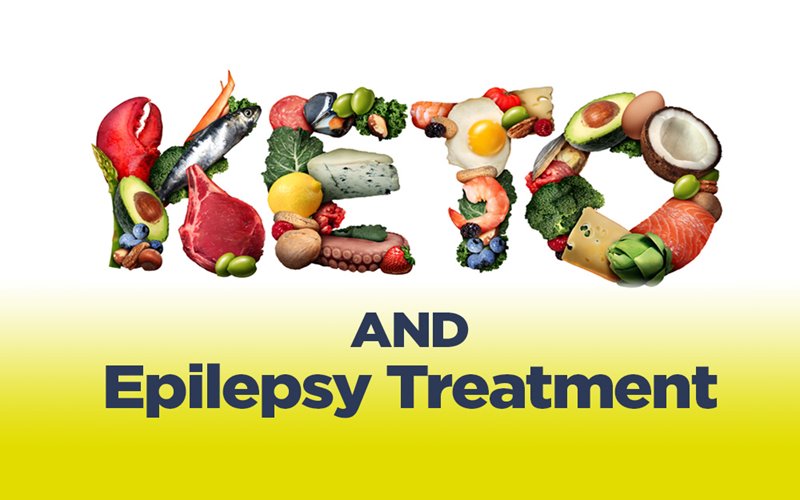We all know that the keto diet is a low carb diet, but have you ever heard about the seizure ketogenic diet that helps people with epilepsy. Yes, the keto diet helps to control seizure and many doctors started to recommend the ketogenic diet for poorly controlled epilepsy patients.
The keto diet is a diet high in fats and low in carbs so it will change the process of how the brain gets its energy to function. In most cases, the diet has successfully reduced seizure in many patients.
The seizures ketogenic diet is one of the oldest treatments for epilepsy patients. With the right support and knowledge, it is possible to treat epilepsy patients with the keto diet. So, let’s learn more about the ketogenic diet plan.
What is the ketogenic diet?
The ketogenic diet is considered the medical or therapeutic diet and the diet is especially designed to cure certain medical conditions. The keto diet is specially recommended for children who have epilepsy. When it comes to the keto diet, it consists of 70%-80% of fats, 20% of protein, and 5%-10% of carbohydrates.
So, the doctor recommends a diet for epilepsy patients that include both adult and children. But in certain cases, it is not recommended for adults as the limited food consumption won’t help them for a longer time.
Our body is entirely run by carbohydrates and we got most energy from carbs only. So, in the keto diet, there will be a low level of carbs which will make the body burn fat and gain from it. The ketogenic diet for seizure food list normally recommends food of low glucose level which includes meat, cheese, and high-fiber vegetables.
Apart from epilepsy, the keto diet is also recommended for people who have neurological conditions such as Alzheimer’s disease and autism, diabetes, or morbid obesity.
The ketogenic diet for epilepsy adults
The seizure ketogenic diet is mostly recommended for patients whose seizures are not controlled with the medications. Mostly, it is recommended for the children as the keto diet has resulted in a 90% reduction of seizures. But a study has been conducted for adults, who are having seizure disorders, and found that the results were the same as in children.
It has been found that the keto diet will reduce the seizure frequency by 50% or greater using the ketogenic diet. The results appeared better for the people who are having symptomatic generalized epilepsy.
But still, when it comes to a ketogenic diet for seizures in adults, it is difficult to keep them on diet, and much evidence is still needed for the ketogenic diet in epilepsy adults.
The ketogenic diet for your children
If the seizure in your children is not controlled by the medications, then the first thing that the doctors will recommend is the seizures ketogenic diet. This is the diet that will control the epilepsy and stop the seizures and the diet is real and legitimate. But the diet comes with a strict restrictions and it is hard to follow, so most doctors won’t recommend for all the child patients.
Children who are following ketogenic diet have observed the stop of seizures of 1 in 7 children. There are different types of epilepsy and the diet will work well for all kinds of epilepsy. But still, it works well with the pediatric epilepsy than the adult epilepsies. If the ketogenic diet for epilepsy child is followed for more than a year, then the children will become seizure free.
How does it work?
The ketogenic diet epilepsy mechanism follows the same process of fasting and even we can say that fasting is considered the traditional treatment for seizures. During fasting, starvation will help to breakdown of fat to get more energy. The keto diet also follows a similar process. But still, there is not enough evidence on if ketosis has anything to do with the diet.
What does your child eat?
The ketogenic diet always involves high consumption of fat than protein and carbs. The kids normally get three to four meals in a day, and each meal has more fat when compared to the protein and carbs. The children should avoid starting consuming bread, pasta, sweets, and other foods rich in carbohydrates. Once the keto diet starts working well, we can slowly introduce the carbs as in the Atkins diet.
The keto diet won’t provide all the vitamins to your children, so it would be better if your children take sugar-free vitamin supplements. But all the diet plans should be properly monitored by your doctor.
Risks associated with the ketogenic diet
The side effects of ketogenic diet for epilepsy have been noted in some children including constipation, reflux, change in weight, and kidney stones. But all these symptoms can be reduced if the children stay hydrated and they are under careful monitoring. In certain children, mood changes have been noticed like irritability and hyperactivity.
The benefits of the seizure ketogenic diet are many when compared to the side effects. The side effects can be reduced in the future by making certain adjustments in the diet or by taking medications. So, before considering the ketogenic diet for children learn what the side effects are and risks your children will get.
Things to remember
The ketogenic diet requires a certain time to control the seizure in children and it usually takes 2 years. Here are the certain things for the parents to keep in mind if their children are under the seizures ketogenic diet;
- If the ketogenic diet is stopped at one, then the seizure may get worsen
- Even after getting into the diet, the children need to take seizure medications
- To take the seizure under control, the children need to be on diet for a few years
Bottom Line
Most low carb diet plans will work best for epilepsy patients, but the seizures ketogenic diet is considered the best treatment for both adults and children. Most epilepsy patients wanted to have control over seizure as it causes major anxiety. So, following a healthy diet will help to have control over seizure, and before starting the keto diet, consult your healthcare provider.






0 Comments